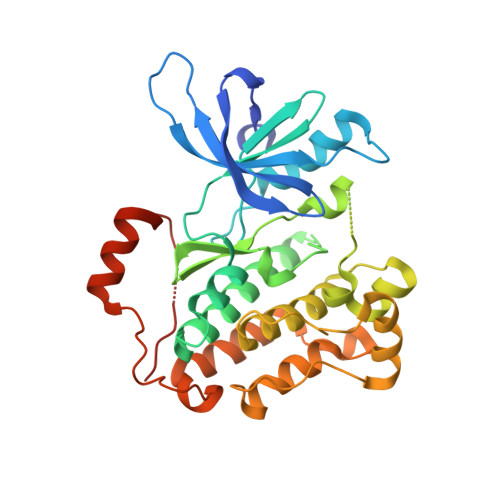Structural insights into drug development strategy targeting EGFR T790M/C797S.
Zhu, S.J., Zhao, P., Yang, J., Ma, R., Yan, X.E., Yang, S.Y., Yang, J.W., Yun, C.H.(2018) Oncotarget 9: 13652-13665
- PubMed: 29568384
- DOI: https://doi.org/10.18632/oncotarget.24113
- Primary Citation of Related Structures:
5X26, 5X27, 5X28, 5X2A, 5X2C, 5X2F, 5X2K - PubMed Abstract:
Treatment of non-small-cell lung cancers (NSCLCs) harboring primary EGFR oncogenic mutations such as L858R and exon 19 deletion delE746_A750 (Del-19) using gefitinib/erlotinib ultimately fails due to the emergence of T790M mutation. Though WZ4002/CO-1686/AZD9291 are effective in overcoming EGFR T790M by targeting Cys797 via covalent bonding, their efficacy is again limited due to the emergence of C797S mutation. New agents effectively inhibiting EGFR T790M without covalent linkage through Cys 797 may solve this problem. We presented here crystal structures of EGFR activating/drug-resistant mutants in complex with a panel of reversible inhibitors along with mutagenesis and enzyme kinetic data. These data revealed a previously un-described hydrophobic clamp structure in the EGFR kinase which may be exploited to facilitate development of next generation drugs targeting EGFR T790M with or without concomitant C797S. Interestingly, mutations in the hydrophobic clamp that hinder drug binding often also weaken ATP binding and/or abolish kinase activity, thus do not readily result in resistance to the drugs.
- Institute of Systems Biomedicine, School of Basic Medical Sciences, Peking University Health Science Center, Beijing 100191, China.
Organizational Affiliation:

















